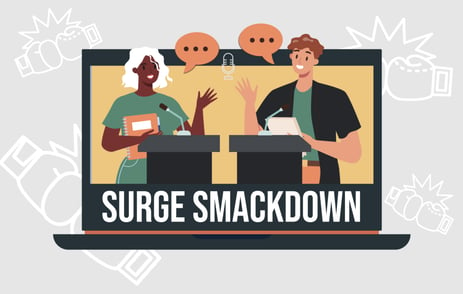With some of the harshest winter conditions to date, many Americans were left reeling during the holiday season – particularly in the travel industry. Severe weather conditions, power outages and antiquated technology all led to over 12,000 canceled flights over the holiday weekend.
While your organization may not be charged with moving people on the busiest travel days of the year in blizzard-like conditions, you are responsible for serving members on a daily basis, and your organization could also be hinging on legacy technology.
And the last thing you want to do is wait for your association's metaphorical “holiday travel season” to realize there’s a disaster waiting to happen.
Southwest’s Software Miscalculation
Before we dive into what this means to association leaders, some context:
While severe weather conditions impacted just about every airline, Southwest, in particular, got most of the headlines. Not only were they forced to cancel over 70% of their flights, but those issues continued long after other airlines recovered, with 2,300 canceled Southwest flights in the following week.
One of the main reasons, according to New York Times columnist Zeynep Tufekci, is the airline’s mounting technical debt, which happens when organizations rely on “older or deficient software that needs updating.”
In Southwest’s case, outdated scheduling software required flight crews to manually call in any delays or cancellations, creating a shortage of crews, pilots and flights home for travelers, among other issues.
Assessing Your Association’s Technology Stack
In the association world, replace Southwest’s technical debt with an outdated learning platform, unsupported updates to association management software, or limitations from a CRM and you could be in a similar predicament.
“A lot of times, associations are forced into decisions by circumstances rather than being forward-thinking about these decisions,” says Nikki Golden, CAE. That means changes are often made without consideration of how that technology may be used in the future or whether updates can break another integration in the system.
So where should associations look for technical shortcomings?
Often it starts with your association management solution. “Most people use that as the point of truth. That's the system for single sign-on for your LMS and any other things you have hooked into it, like registration for your annual meeting or if you have some sort of community platform,” Golden says.
This means associations should ask questions like:
- Whether that system fits its current needs.
- Are upgrades needed or, if upgrades have been put off, how far behind is your system?
- Will your connected integrations and systems – like your LMS – stop being supported in the near future should you fail to keep certain platforms up to date?
- Should you move to a different AMS, what functionality may break for your members?
In Southwest’s case, many of these upgrades have been put off in favor of investing in other areas or simply as a means to keep costs down. However, those quick fixes eventually falter at the most inopportune time.
“Are you creating a bigger headache by putting those types of upgrades off?” questions Golden. “Because it’s going to take more time and attention, especially if you have to make a decision about changing a system that takes a lot more research than upgrading a system.”
Looking Beyond Your Legacy Tech Stack
While technology played a major role in the travel mayhem, so did the regulatory and community aspects of the airline industry.
We know associations can impact policy, which creates a unique opportunity in this situation – working to establish regulatory continuity among airlines and their technical specifications – for example.
Similarly, associations already act as a community for the industries they serve. As Golden points out, this was particularly evident during the pandemic, when associations became a hub for curated information on safety, information on finding resources and a place for members to discuss their own experiences.
The same can be done in the airline industry. “I get that they're all competitors, but at the same time, if a system breaks, it's impacting everybody,” says Golden. “So, what kind of uniformity can you bring to systems, outside of the regulatory space? (Especially if) it's going to be better for everybody.”
In the end, in order for associations to be forward-thinking, it’s important to look beyond their own organizations to find opportunities to make an impact while also shoring up their own shortcomings, like legacy technology.
Tags:
Association Management
January 5, 2023


